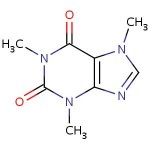After reading this New York Times story, I stopped watching National Football League games.
The gist of the story is that for years the National Football League has ridiculed studies done by outside researchers trying to determine what, if any, affect playing in the NFL has on cognitive behavior. Do all those hits and concussions lead to Alzheimer’s-like diseases and other mental problems for players?
At least one survey of retired NFL players conducted by the University of North Carolina’s Center for the Study of Retired Athletes found a correlation between playing in the NFL and a number of cognitive impairments. Not to worry, though, as an NFL official helpfully dismissed the study as “virtually worthless.”
So the NFL commissioned its own studies, including a recently completed survey of retired NFL Players. That study found NFL players were much more likely than men who didn’t play in the NFL to suffer from Alzheimer’s disease or similar problems.
The NFL’s response? Mostly to highlight the shortcomings of the study. And make no mistake, this survey is not perfect. For example, the survey asked players whether or not they had been diagnosed with Alzheimer’s or a similar memory problem, but it didn’t directly diagnose them — some of the players could be mistaken. Of course NFL players were asked the same questions that the National Health Interview Survey asks of the general public which was used as the baseline rate of incidence to compare the NFL rate to.
Similarly, it could be that the correlation is not due to dangers on the field, but rather the access that elite athletes have to health care off the field: former NFL athletes might be diagnosed with dementia at a higher rate because they have access to better medical care and their physicians are more likely to look for dementia given the violent nature of the sport.
Certainly this study calls for more rigorous follow-ups. But in general the comments of the NFL spokesmen and their hired guns make it clear that the NFL doesn’t really want to know whether or not playing football causes cognitive problems unless the answer is “no.” The fact that the NFL has only begun looking at the problem in the last few years and then resorted to trashing one of the few completed studies it actually bothered to fund, suggests a business that genuinely sees its employees as disposable cogs.
I’m not saying you should stop watching the NFL, just that I can’t stomach the spectacle anymore given the league’s obvious indifference to the legitimate health concerns of its players. That’s far more offensive television than Janet Jackson’s exposed nipple.
